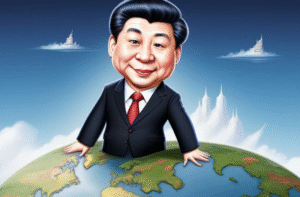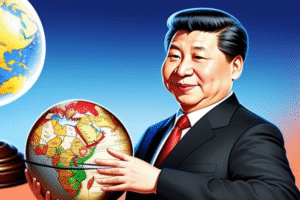$SGD $USD #Singapore #TravelTrends #USATravel #CulturalDifferences #AsiaTravel #GlobalViews #TourismInsights #MarketResearch
Why Are Singaporeans Skipping U.S. Travel Compared to Other Asians? Discover the Surprising Reasons!
Recent findings reveal a significant divergence in how Singaporeans perceive the United States compared to their Southeast Asian neighbors. This intriguing trend sheds light on broader cultural and economic interactions that could influence regional travel patterns. Here, we delve into the unique factors driving Singaporeans’ travel choices and explore the broader implications for international tourism and diplomatic relations.
Singaporeans News: A Unique Perspective on U.S. Relations
The latest Singaporeans news highlights a distinct perspective on the U.S. that sets them apart from travelers from Indonesia, Vietnam, Thailand, the Philippines, and Malaysia. The variance in viewpoints is not just slight but marked, suggesting deep-rooted perceptions and possibly strategic considerations that influence travel decisions. This phenomenon prompts a deeper investigation into what motivates Singaporeans’ travel preferences and how these could affect U.S. tourism statistics.
Cultural and Economic Factors at Play
Singapore’s advanced economic status and its global financial roles might be influencing its citizens’ views towards the U.S. As a hub for international business, including significant interactions in the stock market, Singaporeans may prioritize destinations offering direct economic and professional value. This pragmatic approach could explain the lower interest in leisure travel to the U.S. compared to their Southeast Asian counterparts who might view such travel more aspirationally.
Impact on Tourism and Global Perception
The contrasting travel preferences among Southeast Asians can have substantial implications for U.S. tourism strategies. Understanding the unique position of Singapore in the global and regional context is crucial for crafting targeted marketing campaigns that resonate with this demographic. Additionally, these trends provide insights into how global perceptions of the U.S. are shifting, potentially influencing future diplomatic and economic engagements between these regions.
Exploring Solutions and Opportunities
To address the gap in travel interest, stakeholders in the U.S. tourism industry could consider tailored approaches that highlight specific interests and values resonant with Singaporeans. For instance, promoting U.S. regions known for innovation and business opportunities might attract more visitors from Singapore, aligning with their economic and professional interests.
Conclusion: Bridging the Gap
As we uncover why Singaporeans are less inclined to visit the U.S., it becomes essential to not only understand these unique factors but also to adapt and innovate in our approach towards international tourism and relations. By aligning more closely with the interests and perspectives of different cultures, countries like the U.S. can more effectively engage with global audiences, ensuring mutual benefits and strengthened international ties.
This exploration into the travel preferences of Singaporeans compared to other Southeast Asians offers a fascinating glimpse into the intricate tapestry of global interaction and cultural exchange. As we continue to navigate these complex dynamics, the insights gained can guide more effective and inclusive strategies in tourism and beyond.











Comments are closed.